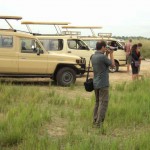
The Nilotics group is another extensive family all over east Africa. They can be divided into the highland Nilotics and the plain Nilotics which in Uganda include; the Nilo Hamites (the karamajong, the Iteso, the Kumam and the Langi), the river lake Nilotics (the Alur, the Acholi and the Japadhola). In Uganda, the river-lake Nilotics can be described as the Luo.
THE LUO
The Luo are part of the river-Lake Nilotics and they are related to the Nuer and the Dinka of Sudan. They are said to have originated from Rumbek in southern Sudan. During the 15th century, they were faced with many calamities which forced them to move away in search of new areas for settlement.
Some reasons for the Luo migration include: overpopulation, human and animal diseases, natural hazards like droughts and floods, external pressure from the Galla tribes men, as well as internal conflicts. Some moved northwards to Shiluk, others moved eastwards to Anuku and some of them continued through Ethiopia past Agoto Hills to northern Uganda. The majority group, however is said to have moved from Rumbek southwards along the Nile, and settled at Pubungu near Pakwach. This group is said to have been under the leadership of Olum.
Olum had three sons namely; Gapiri (Nyapiri), Labongo (Kyebambi), and Tiful. It is said that at Pubungu, Gapiri and Labongo conflicted over the royal spear which was their symbol of Power. Thereafter, they separated. Gapiri leading a group of people crossed the Nile and went to the land of Lendu and Okebu and produced the Alur. The Alur speak Lwo and maintain other elements of Luo culture.Tiful is said to have moved to west Nile also but little is known about his movement and settlements there.
Labongo moved northeast wards from Pubungu towards present Acholi. In the process, the Labongo group intermarried with and assimilated some Sudanic speaking people in northern Uganda and produced the Acholi. By the beginning of the 18th century they were firmly settled in Acholi. There, they encountered the Langi who had been living in Acholi ford about two hundred years. Soon conflicts emerged between the Acholi and the Langi and this forced the Langi to move southwards to Lake Kioga region. The Acholi continued to interact and intermarry with the Langi.In the process, the Langi lost their Ateker language and began speaking Luo. They also lost their pastoral element and became settled agriculturalists because the area around L. Kioga was not conducive pastoralism. Therefore, although the Langi speak Lwo, in actual fact they are not Luo but Nilo-Hamites.
Another group of Luo moved southwards from Pubungu and settled in Pawir which today is settled by the Bagungu. A small group known as the Bito-Luo led by Isingoma Mpunga Rukidi moved on and settled in Bunyoro peacefully and established the Babiito dynasty. The political influence was limited to a new kingdom which came to be known as Bunyoro Kitara. It lasted until 1967 when the new constitution introduced by Milton Obote abolished Kingdoms in Uganda and set up a republic. Those Luo who went to Bunyoro were assimilated. They lost their language and culture and became bantuised. However, they introduced pet names among the Banyoro. It is not clear whether there was an interaction between the Bachwezi and Babiito although traditions attempt to link them.
Between the middle of the 16th century and the beginning of the 17th century, some Luo groups pushed eastwards. One group led by Adhola settled in Budama around the first half of the17th century. They chose to settle in a thickly forested area as a defense against the attacks from the Bantu neighbors who were already settled there. This self imposed isolation helped them t maintain their language and culture amidst Bantu and Ateker communities. Between 1550 and 1800, other Luo groups crossed into the Nyanza province of Kenya. By 1800, the Luo had completed their migration and settled in present northern, western and eastern Uganda.
CLICK HERE FOR EFFECTS OF THE LUO MIGRATION IN UGANDA.
LOW LAND NILOTICS
THE HIGHLAND NILOTICS
This group of people is mainly concentrated in Kenya with the Kalenjin as the largest group. It extends to central Tanzania to include the Dasog and Oriek. In Uganda, only the Sebei belong to this group.
THE NILO – HAMITES
These people are often referred to as the Plain Nilotes. In Uganda, they constitute the Atekerin or the Lango group which includes the Karimojong, the Iteso, the Langi, the Kumam and the Kakwa.
MADI-MORU GROUP
Besides those in Uganda, this group of people are found in Southern Sudan, north- eastern Zaire, and the Central African Republic. In Uganda it includes the Lugbara, the Madi, the M etu, the Okebu and the Lendu.

 Posted in
Posted in 

